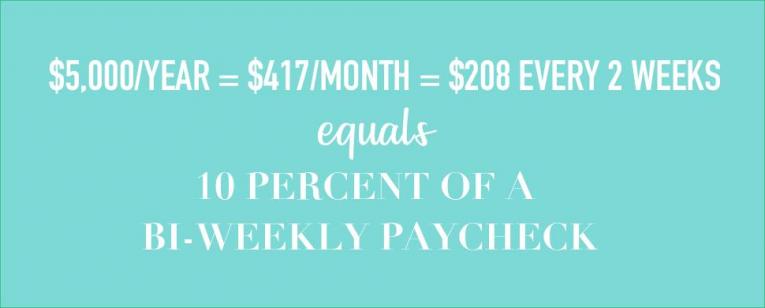Here’s Exactly How Much You Should Have Saved In Your Retirement Account

Unsplash/William Iven
Let’s be real: If you’re in your 20’s, retirement probably seems like a lifetime away. You’re still waiting for your SO to put a ring on it, and who even knows about kids (adulting is hard enough as it is). Knowing you’ve got 40 or more years until you say “sayonara” to your day job can make it hard to save money in a retirement account — and easy to put it into your regular old savings account (where you’ve got easy access to it for when you want to buy that new Kate Spade bag).
But here’s the thing: Future you won’t be living that luxe life, traveling, shopping and spoiling your grandkids if you don’t start saving STAT.
The best way to get started? Increase your employer-sponsored retirement account contribution now, AKA, the money you put into the 401(k) or 403(b) account your company offers. These accounts allow you to save money before taxes are taken out of your paycheck, which means you save in two ways:
- You’re able to put money away into an account that is specifically for retirement. That money isn’t taxed until you take it out, and it is invested, meaning it has the chance to grow on its own (and you don’t have to lift a finger!).
- Less tax is taken out of your paycheck because the amount you’re taxed on is lower since you’ve put some of it into your retirement account. Pretty sweet, right?

Unsplash/Green Chameleon
If you don’t have an employer-sponsored retirement account, you can open an individual retirement account, or an IRA, through your own bank or financial institution. An IRA allows you to save your own money in an account. The money is then invested in a variety of stocks, bonds and more. You can only contribute up to a certain amount of money per year, though, so be sure to check the Internal Revenue Service website to learn more about your specific situation.
Okay, so let’s say you know all of this and are already contributing. Awesome! But now here’s the trick: Do you know how much you need to contribute so you can seriously live that retirement life the way you want? It’s not easy to know what that looks like, especially if you’re just starting out. So, a good rule of thumb is to use your salary as a starting place.
By 35, save the equivalent of your salary.
Ideally, as you get older and gain more experience (and you become that boss in the corner office) you’ll also get paid more. But, that’s not always guaranteed. One way to set yourself up for retirement success right now? Female-focused financial firm Ellevest says to have a full year’s worth of your salary saved in a retirement account by the time you’re 35.
Let’s say you’re 25 and make $50,000 a year. You should aim to save $50,000 in your retirement account in the next 10 years. If you’re just starting from scratch, that’s $5,000 a year you’d ideally want to save.
You can break that down even further by doing some simple math and figuring out how much you need to save per paycheck, per month, into your pre-tax retirement account so you can hit that goal head-on.

Jenna Sachs
This is a simple example, and contributing 10 percent toward retirement is often considered aggressive. But if you do it, you’ll be setting yourself up for serious financial success.
Remember though, you’re hoping our salaries increase over the years, so the percentage you need to contribute to hit our goal by age 35 may fluctuate as well, which could make it even easier to achieve.
Looking even further into the future? Ellevest says to save triple your salary by age 45 and six times your salary by age 55. And with the expected age of retirement for anyone born after 1960 at around 67 years old, according to the Social Security Administration, it’s not a bad idea to start planning ahead.
So start by saving in your own pre-tax, employer-sponsored retirement account, but also know what you’re worth. Aim for a promotion at work and always make sure you negotiate for a good salary when starting a new job. Because, in the end, all of this will help you retire like a boss.
RELATED
3 Major Life Events Every Millennial Should Be Saving For Right Now
When Your Savings Are At Zero, Here’s How To Turn It Around
Here’s A Genius Trick To Maintain Your Savings











